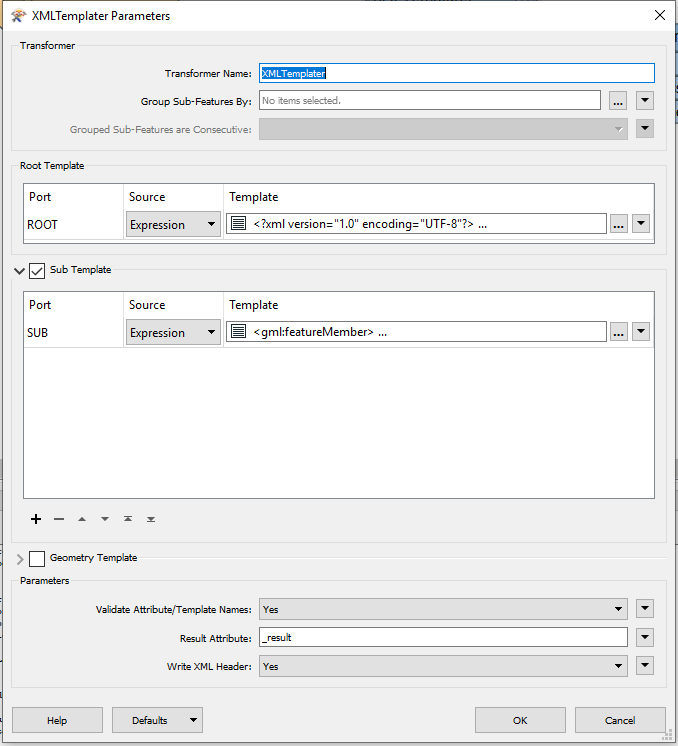Hello,
I am trying to create a GML with XML templater.
My reader is Shapefile format.

When I paste the sub-element template in the root template I don't have any errors (but then of course the file isn't valid).
However, I have the following error when I try to add a sub-element:
XMLTemplater(XMLTemplaterFactory): The following error occurred near line 19, column 6 of the query:
XMLTemplater(XMLTemplaterFactory): "gml": can not expand namespace prefix to URI
XMLTemplater(XMLTemplaterFactory): An error occurred while parsing the 'SUB' sub-template
XMLTemplater(XMLTemplaterFactory): A fatal error has occurred. Check the logfile above for details A fatal error has occurred. Check the logfile above for details
XML templater:

With the following for the SUB template:
<?xml version="1.0" encoding="UTF-8"?>
<gml:FeatureCollection xmlns:za="http://osi.irisnetlab.be/gml" xmlns:gml="http://www.opengis.net/gml">
<za:LayerNameFr>$(Layer_Name_FR)</za:LayerNameFr>
<za:LayerNameNl>$(Layer_Name_NL)</za:LayerNameNl>
{fme:process-features("SUB")}
</gml:FeatureCollection>And for the SUB template:
<gml:featureMember>
<za:NameFr>Cluster n°{fme:get-attribute("NBCLUS")} - Responsable: {fme:get-attribute("resp")}</za:NameFr>
<za:From>15/06/2019</za:From>
<za:To>15/12/2019</za:To>
<za:Comment>{fme:get-attribute("A_list_ws")}</za:Comment>
<za:TypeZa>Autre</za:TypeZa>
<gml:surfaceProperty>
<gml:Surface srsName="EPSG:31370" srsDimension="2">
<gml:patches>
<gml:PolygonPatch>
<gml:exterior>
<gml:LinearRing>
<gml:posList>{geom:get-points()}</gml:posList>
</gml:LinearRing>
</gml:exterior>
</gml:PolygonPatch>
</gml:patches>
</gml:Surface>
</gml:surfaceProperty>
</gml:featureMember>Could someone hint me in the right direction?
Thank you !






